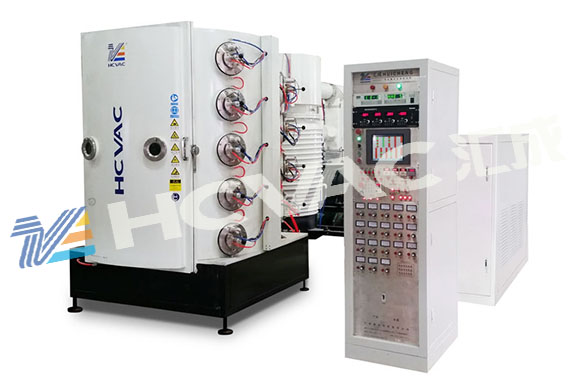Multi-arc ion coating machines are very common in daily applications and account for a relatively high proportion in the coating industry. Many large-scale daily necessities and tools are coated using multi-arc ion coating machines, so there are many markets Arc ion coating machines account for a high proportion. How do so many arc ion coating machines work? Below, the editor of Huicheng Vacuum will give you a detailed introduction, hoping to help you:

The working principle of multi-arc ion plating technology is mainly based on the cold cathode vacuum arc discharge theory. After the vacuum arc is ignited, some discontinuous, bright spots with various sizes and shapes appear on the surface of the cathode target. They swim rapidly and irregularly on the cathode surface. When some spots are extinguished, some spots are formed in other parts, maintaining the Arc burning. The current density of the cathode spot reaches 104~105A/cm2, and metal vapor is emitted at a speed of 1000m/s. Every 10 electrons emitted can emit 1 metal atom, and then these atoms are ionized into high-energy positive ions. (such as Ti+), positive ions combine with other ions (such as N- to form TiN) when running in the vacuum chamber, and are deposited on the surface of the workpiece to form a coating.
Vacuum arc discharge theory believes that the migration of electricity mainly relies on field electron emission and positive ion current. These two mechanisms exist at the same time and restrict each other. During the discharge process, the cathode material evaporates in large quantities. The positive ions generated by these evaporated atoms generate an extremely strong electric field within a short distance near the cathode surface. Under the action of such a strong electric field, the electrons are enough to directly transfer from the Fermi energy of the metal. The stages escape into the vacuum, producing what is called "field electron emission."
Multi-arc ion coating machines are generally relatively simple. The entire equipment mainly consists of a vacuum coating chamber, an arc source, a vacuum acquisition system, and a bias source. The arc source is a key component of multi-arc ion plating equipment. Nowadays, small arc sources are generally used in China, with a diameter of 60 to 80 mm and a thickness of 1/2 of the diameter. A few ion coating machines adopt a cylindrical arc source design. A coating machine only installs a cylindrical arc source in the center of the vacuum chamber, and the workpiece is placed around it. Some foreign ion coating machines use large arc sources with a diameter of up to 100mm and a thickness of about 1/4 of the diameter. A coating machine is equipped with 12 to 32 arc sources, and the workpiece to be plated is placed in the center of the vacuum chamber. Guangdong Huicheng Company is actively developing technical cooperation with domestic and foreign enterprises and scientific research institutes. And gratifying results have been achieved in some commonly used coating application fields. The coating coating process can prepare aluminum oxide coatings with high hardness, thermal stability and chemical stability. The technology can prepare many physical vapor deposition coatings, such as TiN, TiCN, AlTiN, AlTiSiN, CrN and DLC, etc.



